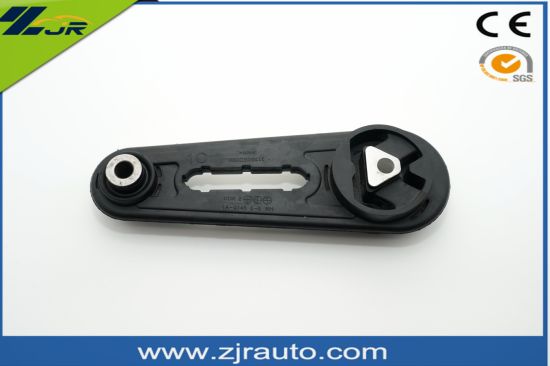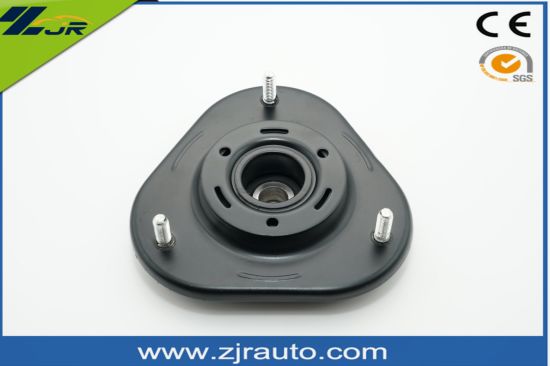Views: 13 Author: Site Editor Publish Time: 2024-12-31 Origin: Site








Strut mounts are critical components of modern vehicle suspension systems, yet they often remain misunderstood even among seasoned car enthusiasts. A quality strut mount ensures that your car rides smoothly, handles well, and remains quiet on the road. This article will explore everything you need to know about strut mounts, from their function, how they work alongside struts, and expert advice on installation. Let's zoom in and uncover why these small components are essential to your vehicle's performance.
We'll also answer key questions, including:
What is a strut mount?
What are struts and mounts?
How to install strut mounts?
Finally, we'll share why investing in a trusted supplier, like ZJR Auto, can make all the difference in boosting your vehicle's suspension performance.


A strut mount is a vital part of the suspension system that connects the vehicle's strut to the chassis. More specifically, it links the strut, a key suspension component, with the car's body, effectively acting as both a mounting bracket and a cushion.
Strut mounts generally consist of a few main elements:
Metal Plate or Housing: This robust component secures the strut to the vehicle body.
Rubber Insulator: Placed between metal surfaces, this portion absorbs vibrations and reduces road noise.
Bearing (for Some Front Struts): Many strut mounts installed on front-wheel suspension systems include a bearing that allows the struts and wheels to swivel easily when you turn the steering wheel.
Over time, the rubber insulator or bearing can wear out, leading to clunking noises, harsh vibrations, or even reduced steering accuracy.
The strut and strut mount is much more than a simple connector. Its primary purposes include:
Vibration Absorption: Dampening shocks and vibrations from the road to ensure a smoother and quieter driving experience.
Structural Support: Providing a tight connection between the strut and vehicle chassis, reducing wear and tear on other components.
Steering Assistance: On front suspension systems, its integrated bearing facilitates seamless steering.
A malfunctioning strut mount can compromise driving comfort, steering precision, and even the life span of nearby parts, such as struts and tires.
To fully appreciate the role of strut and strut mount, you must first understand each one individually.


Struts are an integral part of your car's suspension system, combining the functions of shock absorbers and structural support. The primary job of a strut is to absorb the shocks from bumps and potholes while maintaining proper alignment of the suspension. Without struts, your car would bounce uncontrollably every time you hit a bump.
Struts are generally composed of the following:
Spring: Supports the vehicle’s weight and absorbs large impacts.
Shock Absorber: Moderates the up-and-down motion of the springs for a controlled ride.
Mounting Plate: Where the strut attaches to the rest of the suspension system.
While the term "struts and mounts" is often used together, a strut mount is a distinct component, as explained earlier. While the strut handles the heavy lifting of absorbing shocks, the mount serves as the intermediary, ensuring the strut is securely and effectively attached to the car's chassis. Together, struts and strut mounts form the backbone of your vehicle's suspension system.
Both components complement each other in delivering stability, precision handling, and comfort. Without quality strut mounts, even the best struts might fail to perform well.
Struts and strut mounts endure extraordinary stress daily. Depending on the driving conditions, they have a lifespan of approximately 50,000 to 100,000 miles. Symptoms indicating the need for strut mount or strut replacement include uneven tire wear, clunking noises, or poor steering responsiveness.
| Feature | Strut | Strut Mount |
| Primary Role | Absorbs shocks and supports chassis | Connects strut to vehicle chassis |
| Structure | Spring + shock absorber | Rubber, metal, and sometimes bearing |
| Location | Suspension assembly | Above or alongside the strut |
| Key Functionality | Supports vehicle weight, absorbs impact | Reduces vibration, stabilizes & steers |
Installing or replacing a strut mount can be a complicated yet rewarding task. Proper installation not only enhances your car's performance but also addresses unwanted noise or rough handling caused by worn-out mounts. If you're comfortable working on car suspensions or following detailed instructions, here’s a guide to help you.
Socket wrench set
Jack and jack stands
Spring compressor
Torque wrench
Penetrating oil (optional)
Before you begin, park your car on a flat surface. Ensure the parking brake is engaged and the car is properly supported by jack stands. Always prioritize safety when working under a car.
Access the Mounts: Open the hood or access the rear trunk to locate the strut mount bolts.
Detach Strut Assembly: Unbolt the lower strut from the suspension system with the socket wrench. You may need penetrating oil if the bolts are corroded.
Compress the Spring: Use the spring compressor tool to safely compress the strut spring. This step is critical to prevent injury due to the high tension in suspension springs.
Remove Mount: After compressing the spring, detach the existing strut mount.
Check Fitment: Ensure the strut mount matches your vehicle’s specifications.
Attach New Mount: Place the new mount securely on top of the spring and fasten the bolts. If the mount has an integrated bearing, ensure proper alignment.
Reassemble the System: Reattach the strut assembly to the suspension and vehicle chassis.
Use a torque wrench to tighten the bolts to the manufacturer’s specifications. Test drive your car to ensure everything is functioning as intended.
Skipping the Spring Compressor: Attempting to remove or install mounts without compressing the spring can lead to injury.
Misalignment: Misaligned mounts may cause steering issues or excessive vibration.
Incorrect Torque: Over-tightening or under-tightening the bolts can damage the strut assembly or lead to unsafe driving conditions.
| Task | Completed? |
| Vehicle securely lifted? | ✅ |
| Spring safely compressed? | ✅ |
| Old strut mount fully detached? | ✅ |
| New mount properly installed? | ✅ |
| Bolts torqued to specification? | ✅ |
Proper installation ensures you’ll enjoy a pleasant and safe driving experience, free from clunking or excessive vibrations.
A strut mount is a suspension component that attaches the strut to your vehicle’s chassis. It reduces noise and vibration while providing structural support and, in some cases, assisting with steering.
While struts absorb shocks and provide suspension support, mounts act as a link that minimizes vibrations and ensures smooth strut operation. Together, they provide stability, comfort, and control.
Common signs of a worn strut mount include clunking noises, uneven tire wear, poor alignment, and rough handling over uneven terrain.
Replacing strut mounts not only improves ride quality but also prevents further damage to struts, tires, and other suspension components.
Yes, with the proper tools and knowledge. However, hiring a professional is recommended if you’re unfamiliar with suspension systems.


Your vehicle deserves the best components, and ZJR Auto is a trusted provider specializing in high-quality strut mounts and suspension parts. The durability and performance of ZJR Auto products have earned them a reputation for excellence among car enthusiasts and professionals alike.
For premium strut mounts and comprehensive support, reach out to ZJR Auto using the contact details below. Their friendly team is ready to assist with all your automotive needs.
Email: info@zjrauto.com
Phone: +86 13702583315
Restore your car’s suspension to peak performance with ZJR Auto—the experts in durable and reliable automotive parts!
How To Change Control Arm Bushings – A Complete Guide
A Comprehensive Guide To Shock Mounts
Everything You Need To Know About Engine Mounts